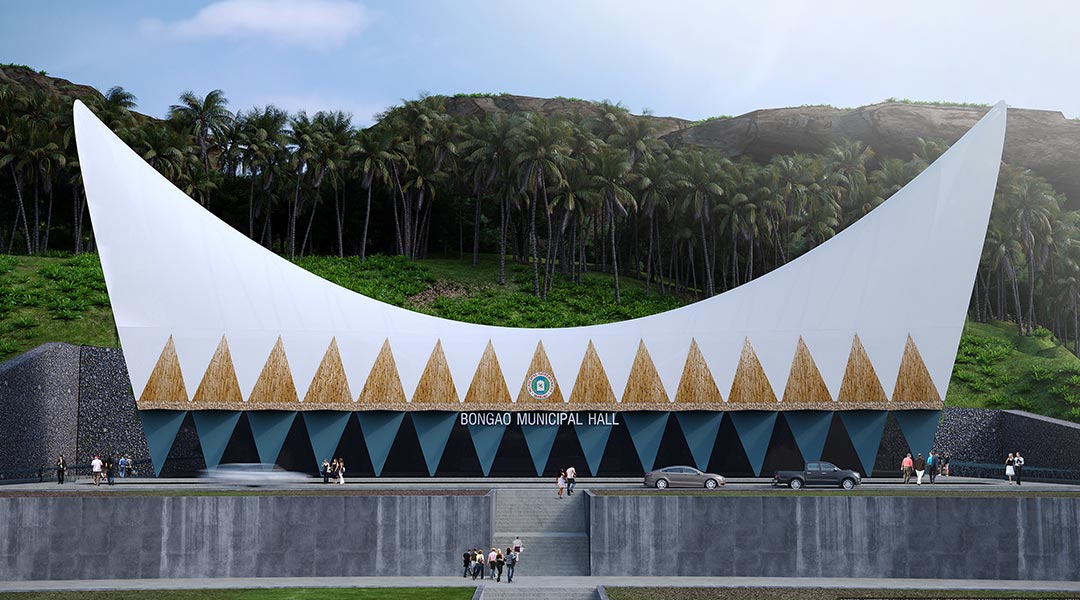
DADA or Deo Alrashid Alam Design Architecture is a local firm formed to mirror an artist’s passion for crashing through the norms of architecture. Known for defining new industry standards, DADA has recently become famous for its design on the Tawi-Tawi resort, “bihing tahik,” which is highly distinguishable for its design that mimics giant clamshells. DADA, being the showstopping architecture firm that it is, has several other residential and commercial projects that exemplify its reputation as one of the local industry’s best. We will, however, highlight an upcoming project designed to embrace the idea of inclusivity.
The Bongao Municipal Hall was a project given to the firm literally days after the MECQ began in March 2020. For DADA, it was a perfectly timed assignment that gave its team much-needed hope and motivation stolen by the pandemic.. After a Zoom meeting with proponent Mayor Jimuel Que, a young public servant from Bongao and his entire staff, the project was given the green light, being greeted with much enthusiasm from the mentioned patrons.
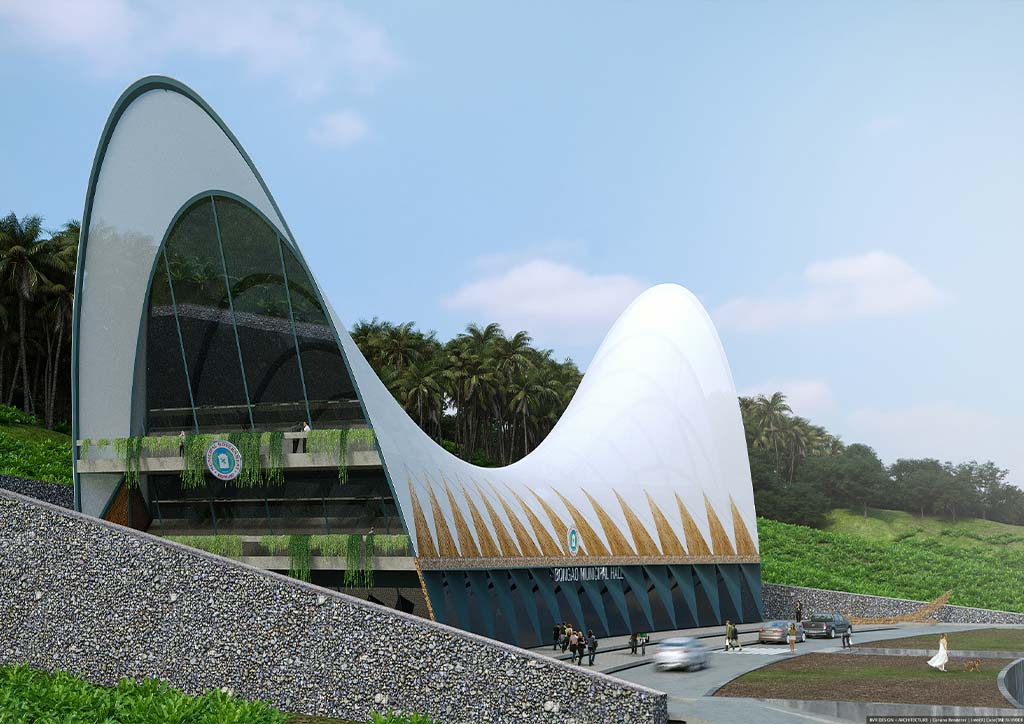
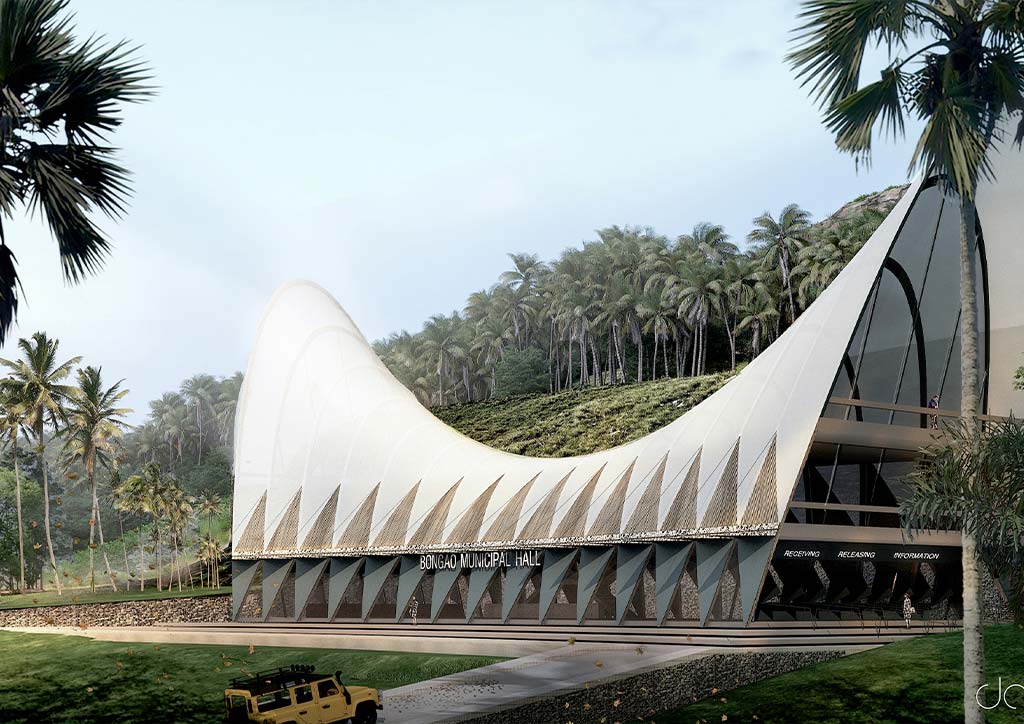
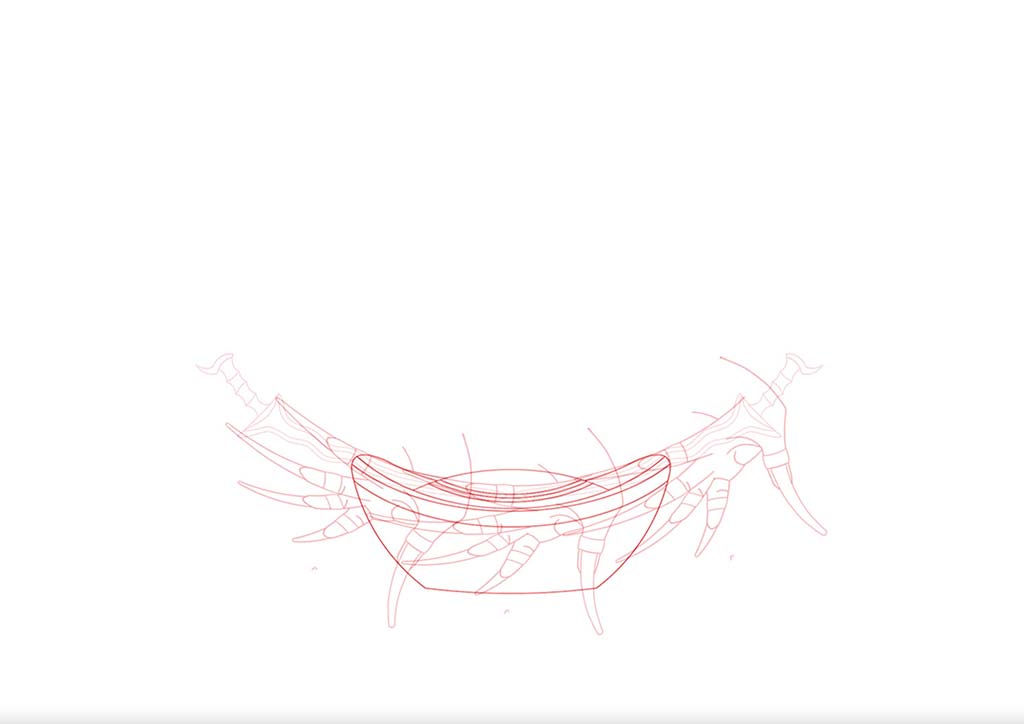
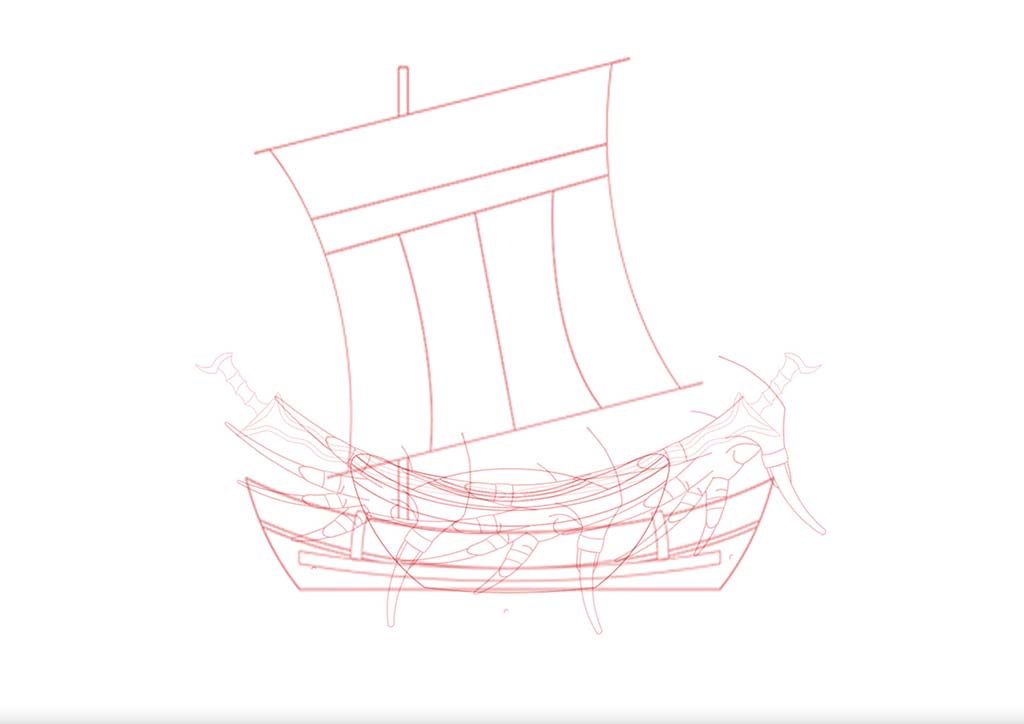
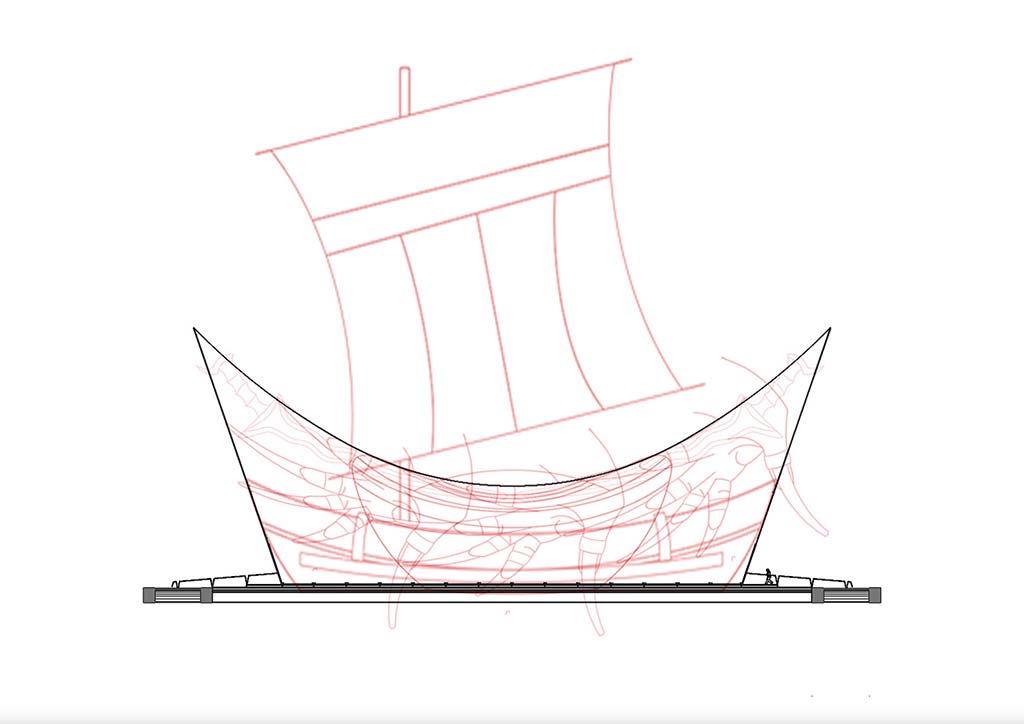
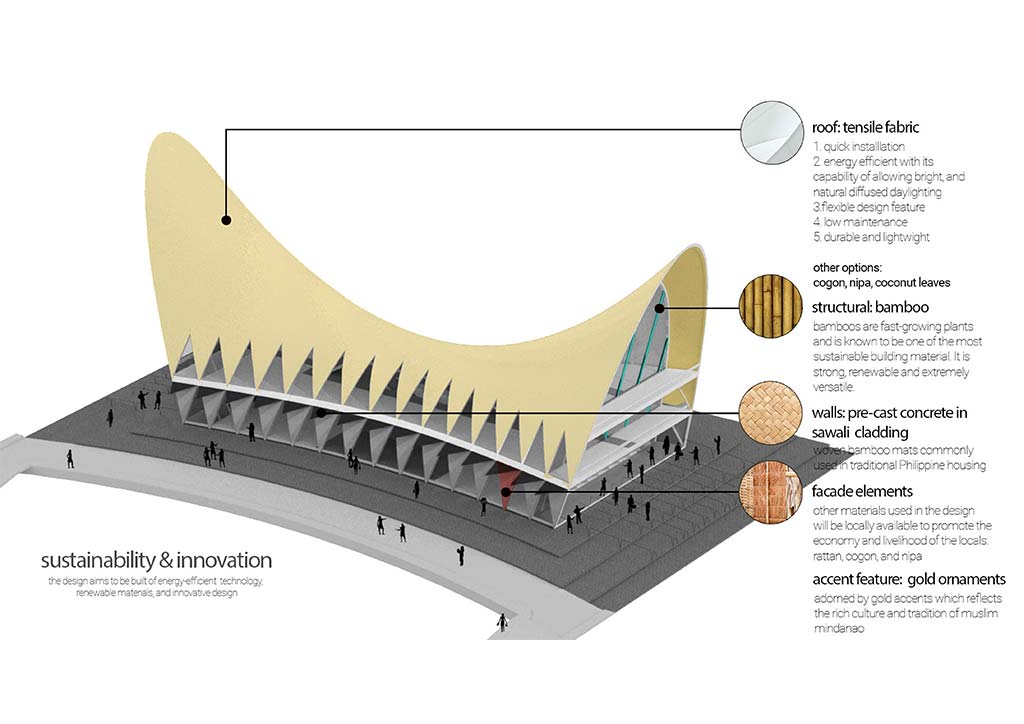

“Truth be told, I was a bit caught off guard; usually people are afraid to try new things. But they were all excited and asked relevant questions. But as for the community, I have no clue at the moment. I guess I will find out when we visit Bongao and we get to talk with the locals.”
Being a half-Tausug raised in Mindanao, DADA founder Deo Alam was just as excited as his collaborators to begin this new project. These partners are also the same patrons who contributed visions and perspectives that shed light on how the pandemic truly affected people. With their perspectives, DADA was able to better understand how to craft a public-friendly structure.
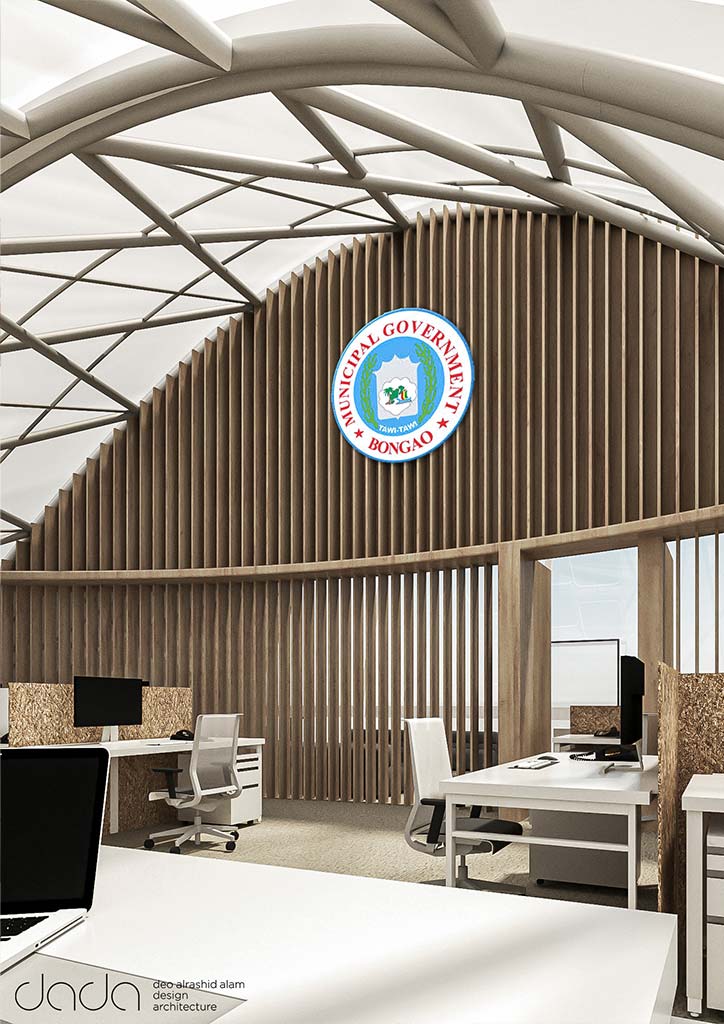
The municipal hall is set on the bottom of the only mountain in Bongao, Tawi-Tawi. Conceptualized on the ideas of transparency and sustainability, the project highlights prioritizing the use of local materials like clay bricks, cogon, and split bamboo material called sawali.
“Our key goal is to give the community a public building where they will feel that it is theirs—that they are a part of it, that it will be efficient, and that they will see the transparency–literally and figuratively–of their local government. I am also praying that it will give them a sense of pride and nationalism.”
By purchasing and using materials that were as close to the project as possible, the municipal hall also had a social impact of giving sustainable jobs to the partnered small businesses.
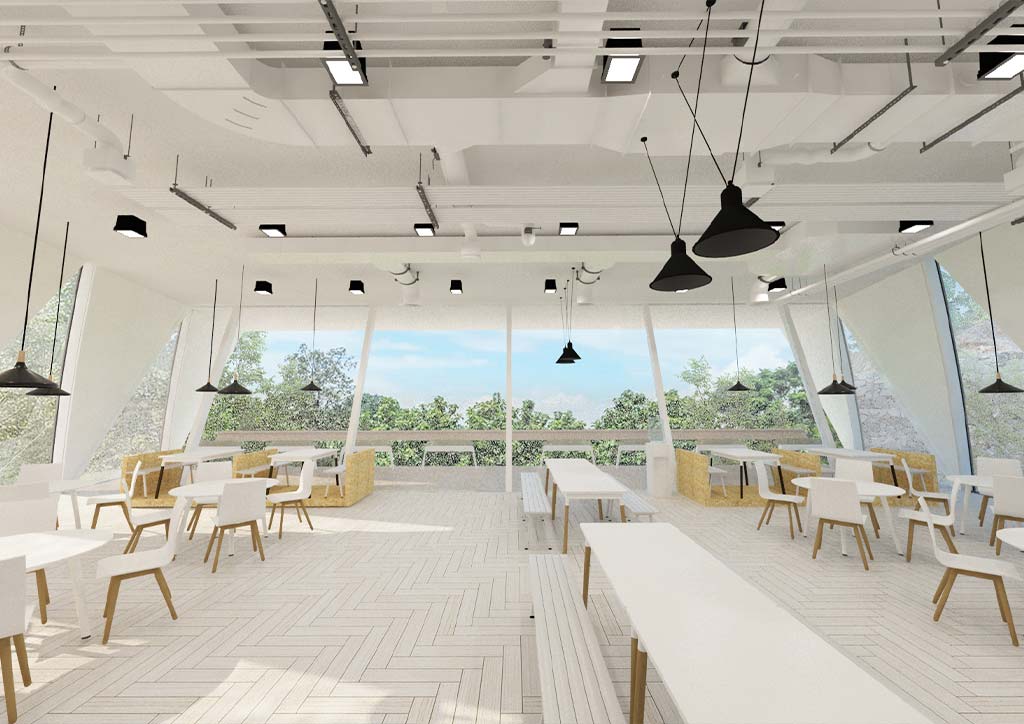
Designed to Include
Embracing the idea of inclusivity, the new project was created in order to make the locals, the different tribes and sectors in society, know that the public building belongs to them and not just to the government. This idea was made clear even during the first step of the design process where the team took ample time to understand Bongao Island’s history and local Mindanao tribes.
“There are different cultures and customs, and we needed to make sure we can be creative and agile in order to best align to the local context in a desirable, viable, feasible model. After getting enough information, data, and a deeper understanding of the community’s vision and needs, we were able to more clearly define the problem and address it in a human-centric way.”
Aside from carrying a design that encapsulates the locality, the municipal hall doesn’t miss highlighting healthy spaces by maximizing the office space. Using glass walls, the space transformed into a bigger, much open area that allows for the entry of natural light. Bigger work tables were also installed to help make public servants feel a sense of pride and a sense of responsibility. Larger tables also help in dissolving the sense of being overwhelmed since working in a small space with stacks of papers can actually cause negative psychological effects.

Other notable features include a tensile fabric to be used as roofing material. “Since the tensile fabric is translucent, we really intended to use this to help us reflect the transparency as well as its own sustainable benefits.”
Using this fabric, natural light will shower the third floor and reach the lower-level walkways. Before such features were integrated, DADA’s team conducted special research on the psychological effects of colors, lighting, and materials on an individual.
“These techniques were taught early on in design classes and we appreciate it now more than ever. The main objective is to provide a workspace that will set a mood of positivity to the users.”
This municipal hall wasn’t crafted through an entirely smooth process, of course. Like every other project, it was met with challenges. In DADA’s case, they had to address the problem of tackling the psychological effects of mistrust through transparency.
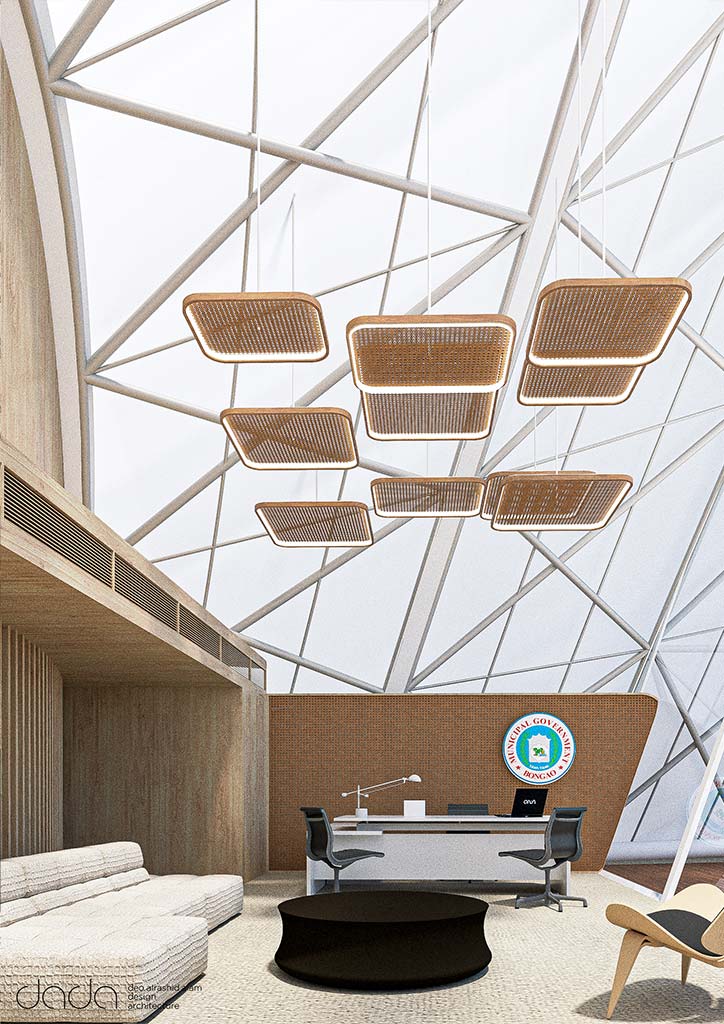
“The biggest challenge was to reflect transparency between people and the public servants. I mean, how does a designer translate that to the built environment?”
This was mostly addressed through physical transparency shown through the incorporation of glass walls. By removing solid walls and using glass partitions, the design helped deter red-tape practices and create greater space for the people and public servants. This idea of transparency was inspired by an article about the Broken Windows theory that addresses vandalism architect Alam had previously come across.
“If a building has a broken window, the theory states that addressing the problem when still small is the best approach—for example, by quickly repairing the broken windows and improving the surrounding areas. If people see that a building or home is being well-maintained or mended, crimes will decrease; vandals will less likely break more windows or make further damage. This theory was our guide during the design the process: If public servants are provided a workspace that is transparent and will give them a sense of pride, the opportunities and temptations of red tape practices will also decrease.”
READ MORE: Volcanic Ash in Structures: Then and Now
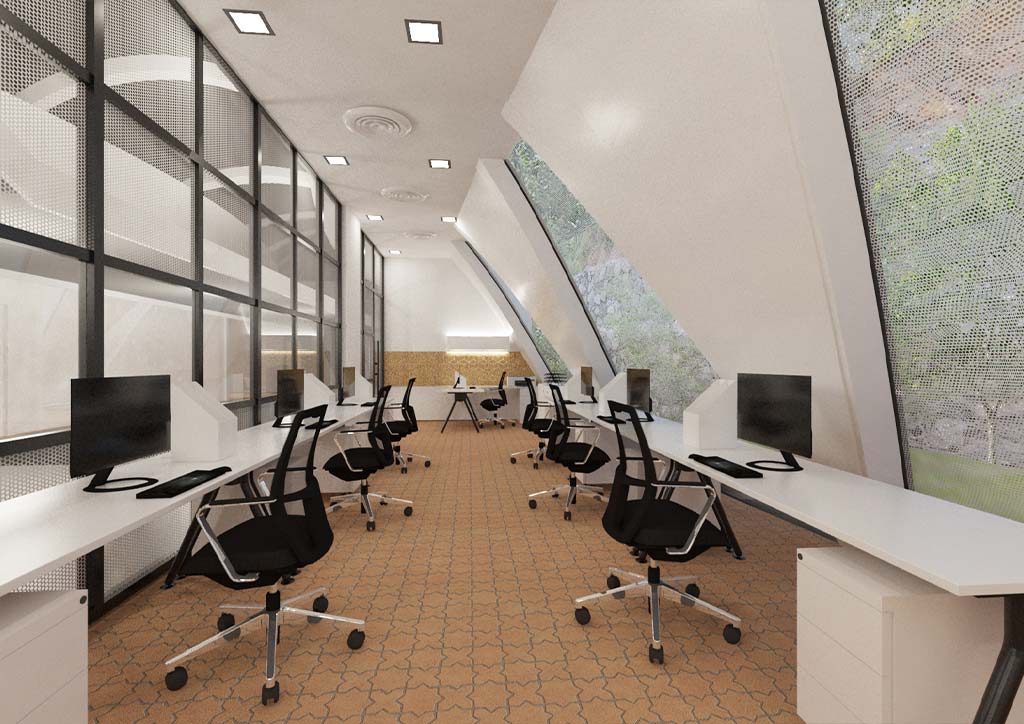
Addressing Big Problems with Small and simple Solutions
Community-wise, the Bangao Municipal will not only serve as a public space available for everyone, but it can also serve as a model for sustainability that other government buildings would follow, functioning as a building that consumes less electricity. By using local building materials sourced from local suppliers, the municipal hall can also give the community a sense of pride and nationalism, assuring them that they were able to contribute to the creation of an important community structure. Using these local materials will also help jump the local economy. In terms of traffic, when laid out and planned properly, the project can reflect the local government’s efficiency and make transactions faster.
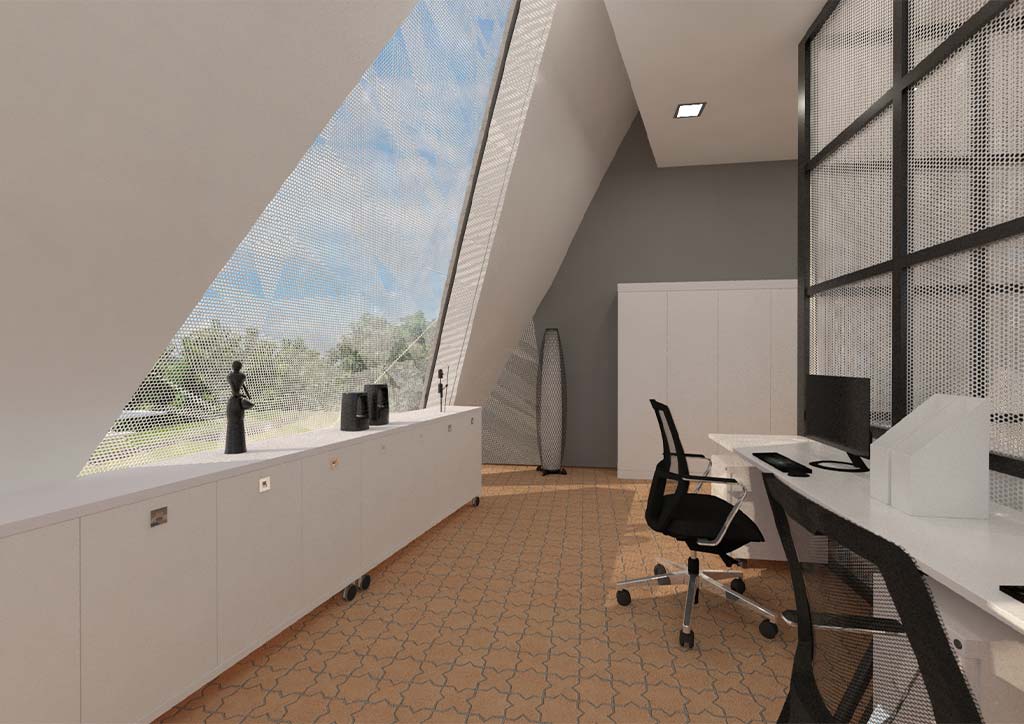
“If the public can see transparency, then investors will see transparency as well.”
How will the Bongao Municipal Hall stay relevant in the future?
“If one politician is serious about change, then this will serve as an inspiration to the future generations. Then we can still retain our identity and pay homage to our past without losing ourselves in the process.”
READ MORE: Future Comfort: Home Solutions for Sustainable Living

Inspiration. Like every first word in change, this new project hinged on inclusivity, sustainability, and transparency would serve as another pillar for a new generation advocating for a better future.
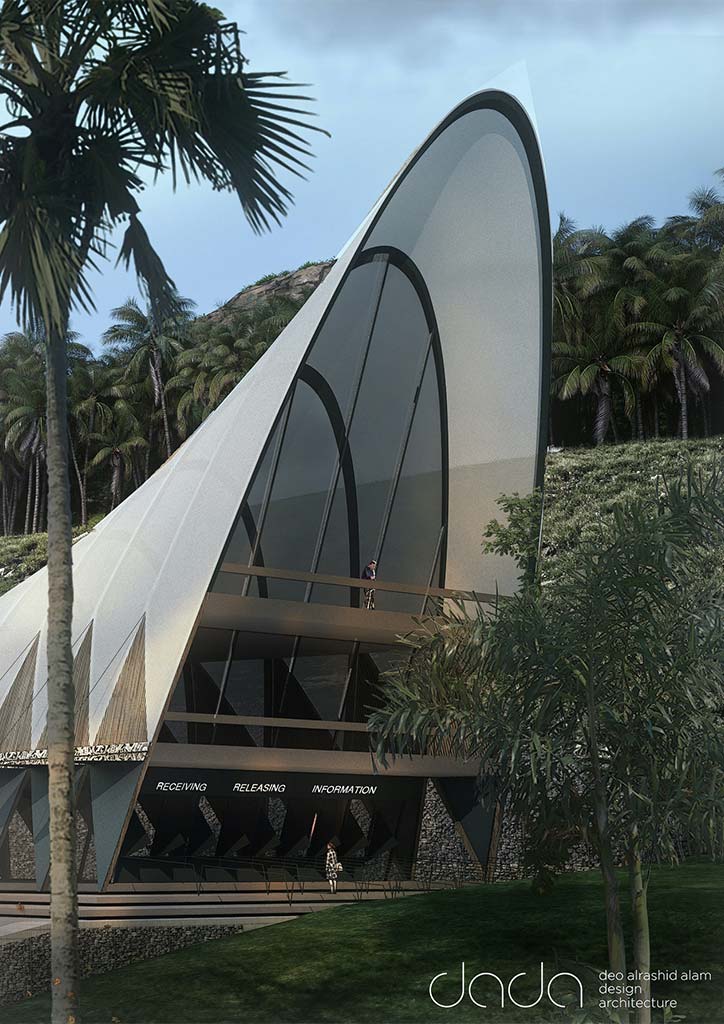
READ MORE: The Sinuda Village in Kitaotao, Bukidnon now has a new Tribal Hall from the DPWH


